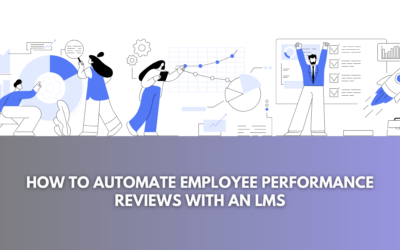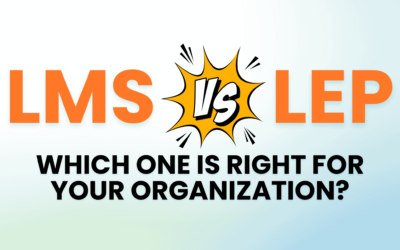How internet can be embedded in the way we shape future learning
Online learning is seemingly the future of learning. Educationists and Organizations have started going along the developing curve and are using internet based knowledge transfer & information exchange in at-least one of the departments they have. They are also able to appreciate the benefits of using internet in most of their activities. Hence embedded internet can change the entire business scenario.
Experts foresee an ambient information environment where accessing the Internet will be effortless and most people will tap into it so easily it will flow through their lives “like electricity.” They predict mobile, wearable, and embedded computing will be tied together in the Internet of Things, allowing people and their surroundings to tap into artificial intelligence-enhanced cloud-based information storage and sharing. More and more, humans will be in a world in which decisions are being made by an active set of cooperating devices. Internet providers and companies have been instrumental in distributing the services even to the remotest of places.
Advantages
The Internet (and computer-mediated communication in general) will become more pervasive but less explicit and visible. It will, to some extent, blend into the background of all we do. The vast growth of online repositories and internet based communication is aptly meeting people’s requirements and allows users to share load of content among each other, track that content and receive it in the modified form at any instant. One of few advantages of embedded internet.

Elearning and its associated online resources, particularly analytics for e-Learning, have become a source of educational big data, as reams of information are gathered charting the progress of learners on courses and training schemes.
Joe Touch, director at the University of Southern California’s Information Sciences Institute, predicted, “The Internet will shift from the place we find cat videos to a background capability that will be a seamless part of how we live our everyday lives. We won’t think about ‘going online’ or ‘looking on the Internet’ for something — we’ll just be online, and just look.”
Embedded Internet
The embedded internet system has increased the scope of elearning and online evaluation. But then, there are many factors which determine the effectiveness of internet use in education. The most important among them is the ability of a user to work with information. It is not that simple, because it demands on behalf of a student the ability to use different kinds of intellectual skills, which many of our students do not possess. This means that a student should be able to analyse the information he deals with, to select the facts, data adequate to the problem he investigates. He/she has to find arguments to prove his/her point of view.
It is quite obvious that the information the student comes across in the Internet is not always helpful. More than that, it can be very aggressive; this can be not up to the scientific level, etc. The Internet is a very democratic environment where every user can locate his/her information. A lot of educational materials do not undergo any examination. This fact produces a lot of difficulties even for a teacher to select the material for educational purposes.
Solution
To solve this problem one must be competent in his professional field. He/she should be able to analyse the material. They should recommend it to their students. The students selecting the information should be also able to decide if this or that material is flawless to be used for the cognitive purposes. Though that is for sure, an Internet-enabled revolution in education will spread more opportunities, with less money spent on real estate and teachers. The fact that the elearning industry is now worth US$56 billion* is especially remarkable given that the term ‘elearning’ was only coined 15 years ago. Today, the industry continues to evolve, but there are definite trends emerging.
Such a continuous learning culture might include: ‘point-of-need’ learning; online scenarios using authentic (real and on-the-job) resources; platforms and tools that support social learning; drip-feed ‘learning bites’ that are delivered over time and/or in response to learner activity; wiki-style mobile resources; online coaching and more. So the modifications and betterments which will occur in the field on learning would be:
· CONTENT CREATION WILL GET FASTER, MORE LEVERAGED AND CHEAPER
· LEARNING WILL BECOME MORE COLLABORATIVE
· MORE CULTURAL AND TECHNICAL SHIFTS TO EMBRACE MOBILE LEARNING
· A FOCUS ON CONTINUOUS FEEDBACK AND ADAPTIVE DESIGN
· ELEARNING PRODUCTION WILL BECOME AGILE
So, we are finally moving to the point where, from a learner’s perspective, there will be a seamless transition between platform and learning content, which is as it should be.
Our News
- AI
- Animations
- Articulate
- Articulate 360
- Articulate Engage
- Articulate Live
- Articulate Presenter
- Articulate Quizmaker
- Articulate Replay
- Articulate Review
- Articulate Storyline
- Articulate Storyline 3
- Articulate Studio
- bite sized learning
- Characters
- Content Library
- Corporate Communication
- E-Learning
- e-Learning Authoring Tools
- Employee Engagement
- Game-Based Learning
- Gamification
- Gamiflexer
- Go Sales
- Healthcare
- Instructional Design
- Interactivity
- Knowledge Transfer
- L&D Trends
- Learning
- Learning & Development
- Learning Experience platform
- Learning Management System
- LMS
- LXP
- Microlearning
- mLearning
- Mobile Learning
- Nugget Learning
- Online Training
- Peek
- Performance Support
- Preso
- Quiz and Assessment Platform
- Replay 360
- Rise
- SCORM
- Screen Capture
- Software
- Storyline 360
- Studio 360
- Training Management
- Trainings
- Uncategorized




